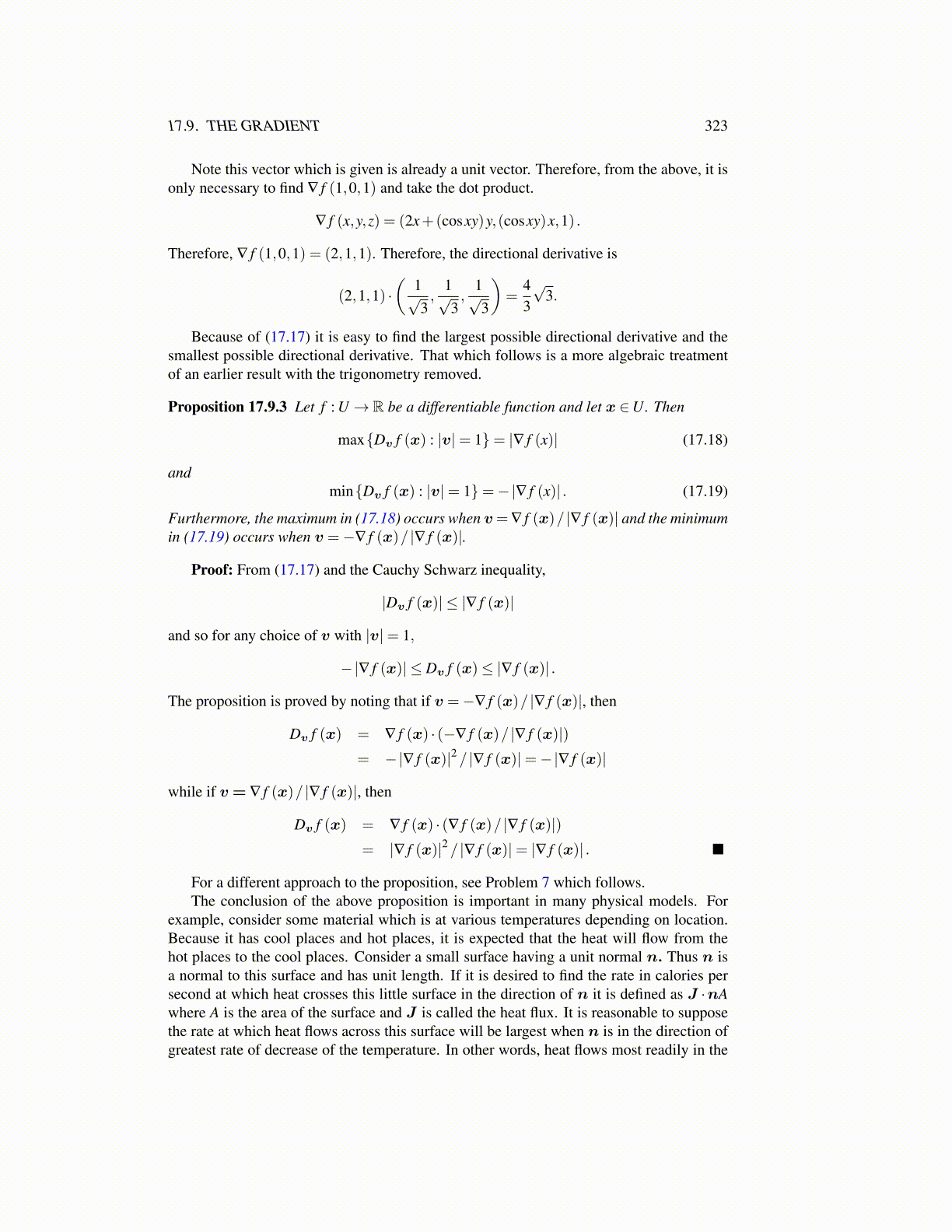
17.9. THE GRADIENT 323
Note this vector which is given is already a unit vector. Therefore, from the above, it isonly necessary to find ∇ f (1,0,1) and take the dot product.
∇ f (x,y,z) = (2x+(cosxy)y,(cosxy)x,1) .
Therefore, ∇ f (1,0,1) = (2,1,1). Therefore, the directional derivative is
(2,1,1) ·(
1√3,
1√3,
1√3
)=
43
√3.
Because of (17.17) it is easy to find the largest possible directional derivative and thesmallest possible directional derivative. That which follows is a more algebraic treatmentof an earlier result with the trigonometry removed.
Proposition 17.9.3 Let f : U → R be a differentiable function and let x ∈U. Then
max{Dv f (x) : |v|= 1}= |∇ f (x)| (17.18)
andmin{Dv f (x) : |v|= 1}=−|∇ f (x)| . (17.19)
Furthermore, the maximum in (17.18) occurs when v=∇ f (x)/ |∇ f (x)| and the minimumin (17.19) occurs when v =−∇ f (x)/ |∇ f (x)|.
Proof: From (17.17) and the Cauchy Schwarz inequality,
|Dv f (x)| ≤ |∇ f (x)|
and so for any choice of v with |v|= 1,
−|∇ f (x)| ≤ Dv f (x)≤ |∇ f (x)| .
The proposition is proved by noting that if v =−∇ f (x)/ |∇ f (x)|, then
Dv f (x) = ∇ f (x) · (−∇ f (x)/ |∇ f (x)|)= −|∇ f (x)|2 / |∇ f (x)|=−|∇ f (x)|
while if v = ∇ f (x)/ |∇ f (x)|, then
Dv f (x) = ∇ f (x) · (∇ f (x)/ |∇ f (x)|)= |∇ f (x)|2 / |∇ f (x)|= |∇ f (x)| . ■
For a different approach to the proposition, see Problem 7 which follows.The conclusion of the above proposition is important in many physical models. For
example, consider some material which is at various temperatures depending on location.Because it has cool places and hot places, it is expected that the heat will flow from thehot places to the cool places. Consider a small surface having a unit normal n. Thus n isa normal to this surface and has unit length. If it is desired to find the rate in calories persecond at which heat crosses this little surface in the direction of n it is defined as J ·nAwhere A is the area of the surface and J is called the heat flux. It is reasonable to supposethe rate at which heat flows across this surface will be largest when n is in the direction ofgreatest rate of decrease of the temperature. In other words, heat flows most readily in the